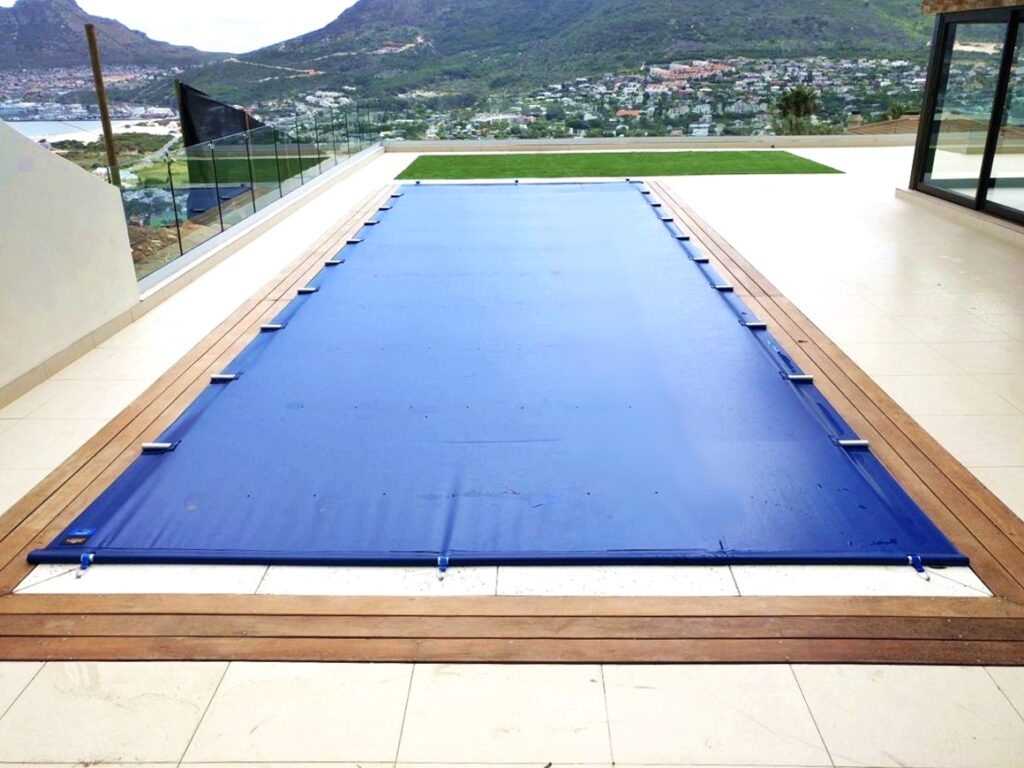A reminder that pool safety is a year-round responsibility for parents and pool owners and that child drownings can almost always be prevented if the right steps are taken.
Should an accident occur in your pool, knowing what a drowning in progress looks like and a quick reaction can make a big difference to the child’s prognosis. Take a moment to familiarise yourself with the following indications of a drowning and please share widely with other parents.
Always keep the pool covered with a PowerPlastics Solid Safety Cover to prevent child drownings.

Find these and more tips about pool safety from TopStep and PowerPlastics Pool Covers. www.topstep.co.za www.powerplastics.co.za
Myths about drowning
Television has a lot to answer for when it comes to how drowning is portrayed and there are many myths out there. Be aware of the signs and remember that the appearance of a drowning can vary widely.

Myth #1: Drowning children will shout for help
Drowning children are physiologically unable to call out. The respiratory system is designed for breathing – speech is the secondary function. Drowning children’s mouths alternately sink below and reappear above the surface but while their mouth is above the surface, they need to exhale and inhale before they sink again. There is not enough time to cry out.
Myth #2: Drowning children wave their arms to attract attention or will thrash in the water
Drowning children cannot wave for help. A person who is drowning cannot perform voluntary movements such as waving or moving towards a rescuer. Envisage the surface of the water as a platform. Someone who is drowning often presses down on the surface and tries to use it as leverage to get their mouth above the water’s surface to breathe. So what the onlooker sees are arm movements that can appear to be playful swimming. Children will not kick wildly either. They remain upright in the water with no evidence of a supporting kick. They are quiet, focused only on breathing and show no signs of violent struggle. The child’s struggle is quick — 20 seconds, whereas an adult struggles for 60 seconds.
Myth #3: Drowning children are unsupervised children
50% of all child drownings will occur 25 metres or less from an adult who was distracted for only a few seconds.
Myth #4: My child has had swimming lessons so he/ she won’t drown
No child is ever drown-proof, no matter how good their swimming skills. A few swimming lessons are no guarantee when it comes to drowning prevention.
Myth #5: Water wings and flotation aids will prevent drowning
Water wings give a dangerous and false sense of security, often making children think they are stronger swimmers than they actually are. Flotation aids can also suddenly deflate.
Myth #6: My children are older and can swim so my pool is fine left uncovered
Children who drown are often short-term visitors to that property. It could be your neighbour’s child who comes over the wall to play, your domestic helper’s child who comes to your property during school holidays or visiting grandchildren and friends’ children – you will have children visiting who can’t swim and the pool needs to be secured for them too.
What does a drowning in progress really look like?
Being able to identify a drowning in progress means you can react quicker and increase the chances of a full recovery. Familiarise yourself with these behaviours:
- Head low in the water, mouth at water level
- Head tilted back with mouth open
- Trying to roll over onto the back to float
- Hair falling over the forehead or eyes
- Body is vertical/ upright
- Eyes glassy & empty, unable to focus
- Eyes open, with fear evident on the face
- Hyperventilating or gasping
- Trying to swim in one direction but without progress
Sometimes the most common indication that a child is drowning is that they don’t look like they’re drowning. They may look like they are treading water and just looking up at their surrounds. One way to be sure is to ask them, “Are you alright?” If they can answer at all, they are probably fine. If they give a blank stare, you may have less than 30 seconds to get to them and prevent a drowning occurring right before your eyes.
Remember, children tend to make a noise in the water. If they’re quiet – get to them ASAP!

Most people imagine Picture A is an accurate depiction of a drowning in progress. In reality, Pictures B & C are more accurate – mouth at water level, head bobbing, body upright, little to no splashing and sometimes the appearance of doing doggie paddle.

- Child drowning prevention – using the layers of safety method to prevent accidents - November 4, 2025
- Interactive learning to promote water safety among children - October 15, 2025
- Safety and sustainability from a single pool cover – the PowerPlastics Solid Safety ticks all the boxes - September 20, 2024





